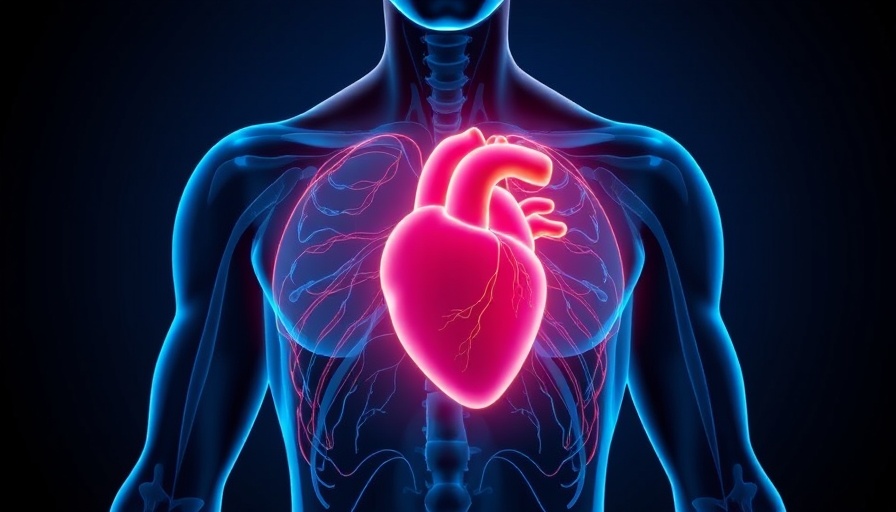
Understanding the Calcium Score and Its Implications
The calcium score, derived from a CT scan, provides insight into an individual's risk of heart disease. During this non-invasive procedure, the scan assesses the coronary arteries that supply blood to the heart. A finding of calcium in these arteries indicates a potential health concern, usually caused by plaque buildup over time. As the heart's blood vessels become increasingly blocked, the presence of calcium—a sign of atherosclerosis—can signify a neglected health status that may lead to severe cardiovascular incidents.
In 'The #1 DANGER with the Calcium Score', the discussion dives into the significance of calcium scores in heart health, exploring key insights that sparked deeper analysis on our end.
Why Calcium Scores Matter to Your Heart Health
While a calcium score can help gauge the risks associated with heart disease, it’s essential to note that it does not capture every aspect of cardiovascular health. For instance, it won’t show soft plaque, which is the more dangerous type because it can rupture and cause heart attacks or strokes. A higher calcium score correlates with an increased risk for these events, yet a score of zero does not equate to immunity. According to recent studies, a calcium score of zero implies low risk but does not eliminate it. Even individuals with a calcium score of zero can still suffer from cardiovascular issues, especially when high LDL cholesterol levels come into play.
The Surprising Reality of Low Calcium Scores
A recent long-term study about individuals with a calcium score of zero shed fascinating light on this misconception. Among young adults followed for nearly two decades, around 5% experienced events such as heart attacks or strokes. This statistic, while only representing a small fraction, is meaningful. It suggests that a zero score, although reassuring, isn't entirely comprehensive. As we age, our cardiovascular risk doesn't just vanish; it can accumulate silently over years.
Decoding Cholesterol and Its Relationship to Calcium Scores
Cholesterol plays a crucial role in determining cardiovascular health. Even individuals with a calcium score of zero can encounter risks if their LDL cholesterol levels are consistently high. Recent findings illustrated that people who average high LDL cholesterol levels may significantly increase their likelihood of developing arterial plaque, further complicating their health narratives. The study indicated a significant leap in risk when LDL cholesterol levels crossed certain thresholds, raising important questions regarding the relevance of monitoring cholesterol levels.
What Do these Insights Mean for You?
So, what does this all mean when it comes to your health? While a calcium score of zero should provide some peace of mind, it’s crucial not to let it lead to complacency. Monitoring risk factors for heart disease, like cholesterol levels, is essential. Engaging in regular check-ups and adopting preventive health measures ensures that you can address potential issues before they escalate. Healthy dietary habits, including balanced nutrition and conscious eating decisions, will significantly bolster your heart health.
A Balanced Approach to Heart Health
Making informed choices in terms of nutrition is vital for maintaining a healthy lifestyle. Consuming foods rich in omega-3 fatty acids, fiber, and antioxidants can contribute to lowering cholesterol levels and reducing overall cardiovascular risks. Incorporating regular exercise into your routine further solidifies these health benefits, creating a tractable path towards better well-being.
The Role of Regular Monitoring
Understanding that heart health is a continually evolving landscape is crucial. Regular monitoring of your calcium score and other health markers can provide valuable insights into your cardiovascular risks. Testing options, such as carotid ultrasound or computed tomography angiography (CTA), are available to detect issues before they progress to critical levels. Consulting with your healthcare provider can tailor a strategy to fit your individual needs and aspirations.
Your Health is in Your Hands
Ultimately, continual vigilance regarding heart health can help mitigate risks associated with cardiovascular disease. Living a heart-healthy lifestyle is not just about mitigating risks but being proactive in embracing healthier choices. Whether you have a calcium score of zero or a higher reading, understanding how your lifestyle choices influence your heart health empowers you to make informed decisions.
In conclusion, while a calcium score of zero indicates low risk in the short term, it’s crucial to acknowledge that it does not guarantee lifelong immunity from heart disease. A collaborative approach, focusing on annual screenings and lifestyle modifications, fosters a proactive stance against potential health challenges. Consult with your healthcare professional to develop a personalized plan that aligns with your heart health goals.
 Add Row
Add Row  Add
Add 




 Add Row
Add Row  Add
Add 

Write A Comment